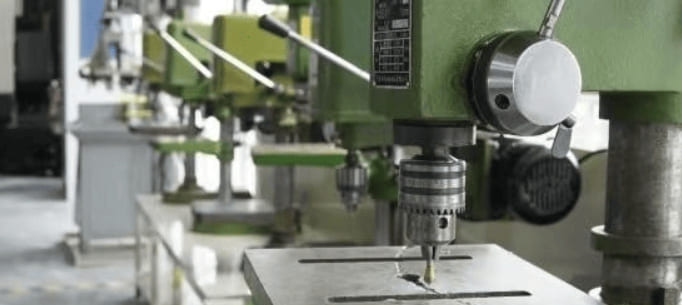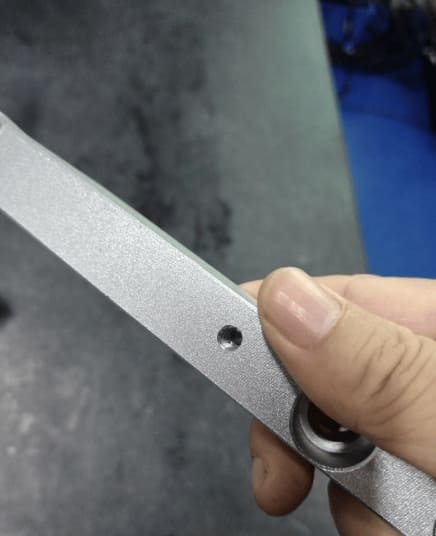CNC tapping technology revolutionises the process: when thread machining enters the age of intelligence
In the realm of metalworking, thread machining has always played the role of "infrastructure". From high-strength fasteners in aerospace to precision threads in micro medical devices, thread quality directly determines product reliability and longevity. The traditional tapping process is like an aging craftsman, although skilled but difficult to adapt to the modern manufacturing industry on the double demand for efficiency and precision. the rise of CNC tapping technology (CNC Tapping), completely rewrite this situation. This digital control and precision machinery perfect fusion of technology, is the world's top manufacturing workshop set off a silent revolution.

the technical shackles of the traditional tapping process
In the early 1990s, I was in Shenzhen, a state-owned mould factory for the first time to operate a rocker arm drilling machine for manual tapping scene is still vivid in my mind. M6 × 1 internal thread processing needs to be drilled first φ5.0 bottom hole, and then use the head cone, two cones in turn for cutting. Workshop masters will particularly emphasise the importance of "reverse chip breaking" - every 1.5 times the depth of tapping into the diameter should be reversed to rotate 1/4 turn to break the chip. Even so, the breakage rate of small-diameter threads is still as high as 15%, and the "tap grave" in the corner of the workshop is adding new members every day.
American Society of Mechanical Engineers (ASME) 1998 statistics show that the traditional tapping process in the processing of high-strength materials (such as 304 stainless steel or titanium alloy), the tool life of less than 50 holes, and it is difficult to maintain a stable thread accuracy of ISO 6H class above. More fatally, when the spindle speed exceeds 200rpm, the risk of tool breakage due to chip blockage increases exponentially. These technical bottlenecks seriously constrain the pace of mass production of large parts such as automotive engine block.
the mechanism of CNC tapping technology breakthroughs
In 2003, I participated in the German EMO Hannover Machine Tool Show, the first time to see with rigid tapping cycle (Rigid Tapping Cycle) of Japan Mazak CNC machining centres. Its core innovation lies in the closed-loop control of spindle and Z-axis motion - through high-resolution encoders to achieve strict synchronisation of spindle angle and axial feed (synchronisation error <±0.01°). When programming the G84 tapping cycle, the control system dynamically adjusts the feed rate (F=S×P, where S is the spindle speed and P is the pitch) to ensure that each spindle pulse corresponds to a precise axial displacement.
This mechatronic control strategy has led to revolutionary advances: when machining M10 x 1.5 threads for automotive aluminium cylinder heads, speeds of up to 1500 rpm and tool life of more than 3000 holes can be achieved. According to Sandvik Coromant's 2019 technical white paper, modern CNC tapping can achieve cutting speeds up to 8 times faster than traditional methods when machining blind holes with a 5:1 D:D ratio, using a helical chipformer tap with internal cold lubrication, while controlling the surface roughness of the threads to within Ra0.8μm.
the scientific demystification of process parameters
The real embodiment of the depth of CNC tapping technology, is behind the strict process science. I have developed a database of tapping parameters for an aerospace company titanium alloy TC4, found that the cutting speed (Vc) and tool life (T) follow the Taylor's equation Vc × T ^ n = C of the law, where the index n value with the coating technology changes significantly. Carbide taps with TiAlN coatings have n values up to 0.45, meaning that when increasing the speed from 20m/min to 30m/min, the life decay is 60% less than that of conventional HSS tools.
Even more subtle is the acceleration control technology. The German Siemens 840D system calculates the vector relationship between angular acceleration (α) and axial acceleration (a) in real time when executing the G331 rigid tapping: a = α × P/2π. The acceleration smoothing algorithm is automatically triggered when load torque is detected to exceed the threshold value, and this dynamic adjustment allows M3 fine threads to be machined to a depth of 50x the diameter and still maintain a lead error of ±15μm. 2018 A test report from Japan's Okuma Machine Tool shows that the synchronisation lag time of its MU-8000V machine has been compressed to an astonishing 0.5ms when tapping at 2,000rpm.
the technical depth of cutting-edge applications
In the field of medical implants, CNC tapping shows irreplaceable value. When processing M2.5×0.45 threads of cobalt-chromium alloy femoral stems in an orthopaedic instrument factory in Switzerland, a fully closed-loop controlled GF machining centre with a micro lubrication (MQL) system was used to achieve spindle chatter control at the 0.2μm level. This near-mirror surface quality resulted in a 40% improvement in the uniformity of contact stress distribution on the threaded mating surfaces, significantly reducing the risk of metal ion precipitation.
The aerospace sector has witnessed a technological breakthrough in extrusion tapping (Form Tapping). Boeing 787 wing titanium alloy fastening holes using CNC extrusion forming process, the continuous flow of metal fibres to increase the tensile strength of the thread by 30%. Boeing's process specification BAC5300 specifically stipulates that the threads of key load-bearing parts must be tapped by CNC forming, and online monitoring of the forming torque curve, any fluctuation of more than ± 7% of the hole must be automatically scrapped.

Technology inflection point for future development
With the advent of the 5G era, the miniaturisation trend is driving the evolution of CNC tapping to new dimensions. Japan Fanuc's latest development of nano-tapping unit, the use of linear motor direct drive and laser interferometer position feedback, in the processing of 0.3mm miniature threads can still maintain 0.5μm lead accuracy. More noteworthy is the rise of intelligent adaptive systems - the author's team in 2020 developed an intelligent tapping system based on acoustic emission sensing, which can identify the state of tool wear in real time through the time-frequency analysis, and automatically execute the retracting action 0.5 seconds before the taper collapses, which reduces the rate of unplanned downtime by 92%.
Standing on the tide of intelligent transformation of the manufacturing industry, the development trajectory of CNC tapping technology is just like a microscopic history of industrial evolution. From mechanical transmission to digital control, from experience to model-driven operation, this technology continues to break through each node in the redefinition of the boundaries of precision manufacturing. When the new generation of quantum sensors and digital twin technology is deeply integrated, perhaps we will witness such a scene: a smart tap in the cutting at the same time, through the cloud data to optimise its own trajectory, in the atomic scale carving out a perfect spiral surface. This is not only a technological leap, but also another profound evolution of human control over the material world.

